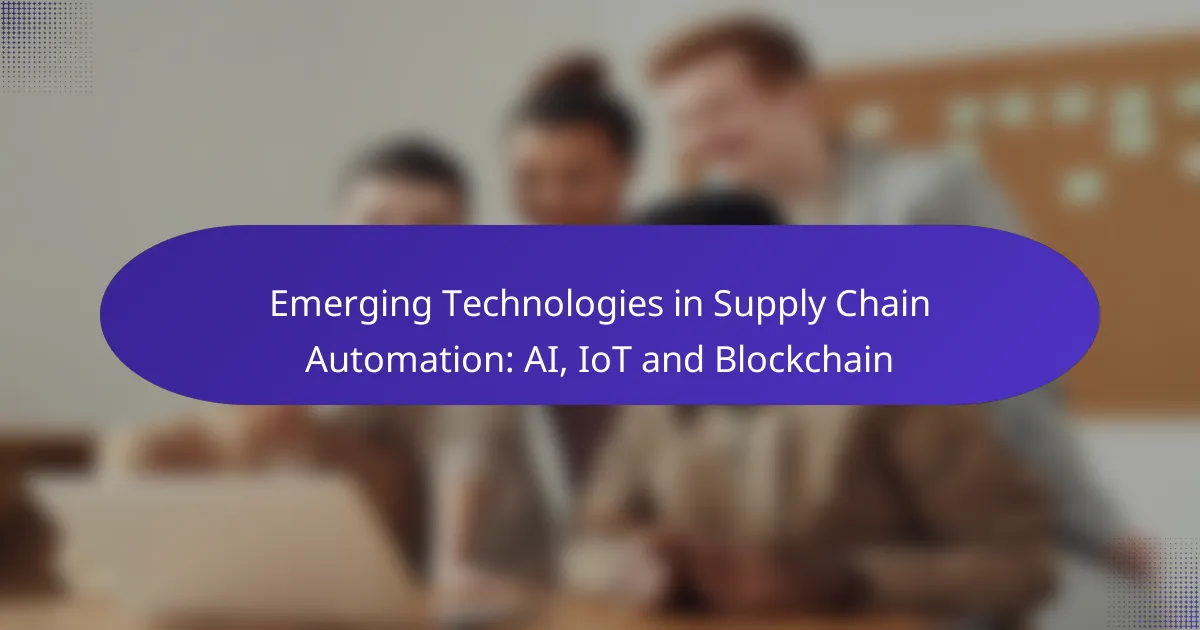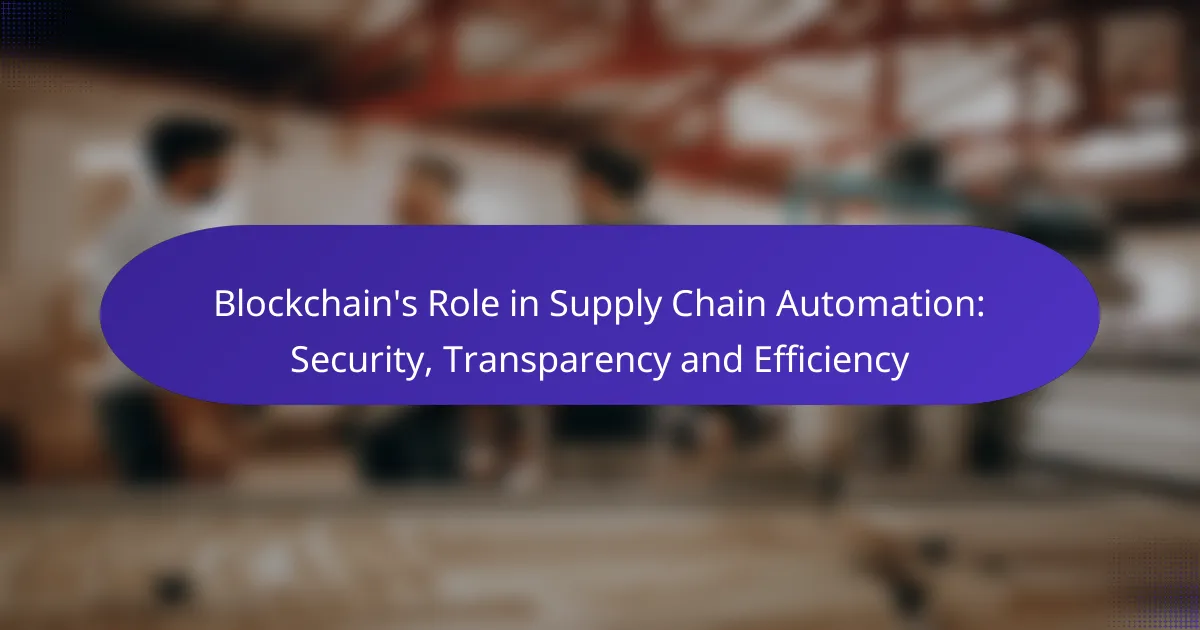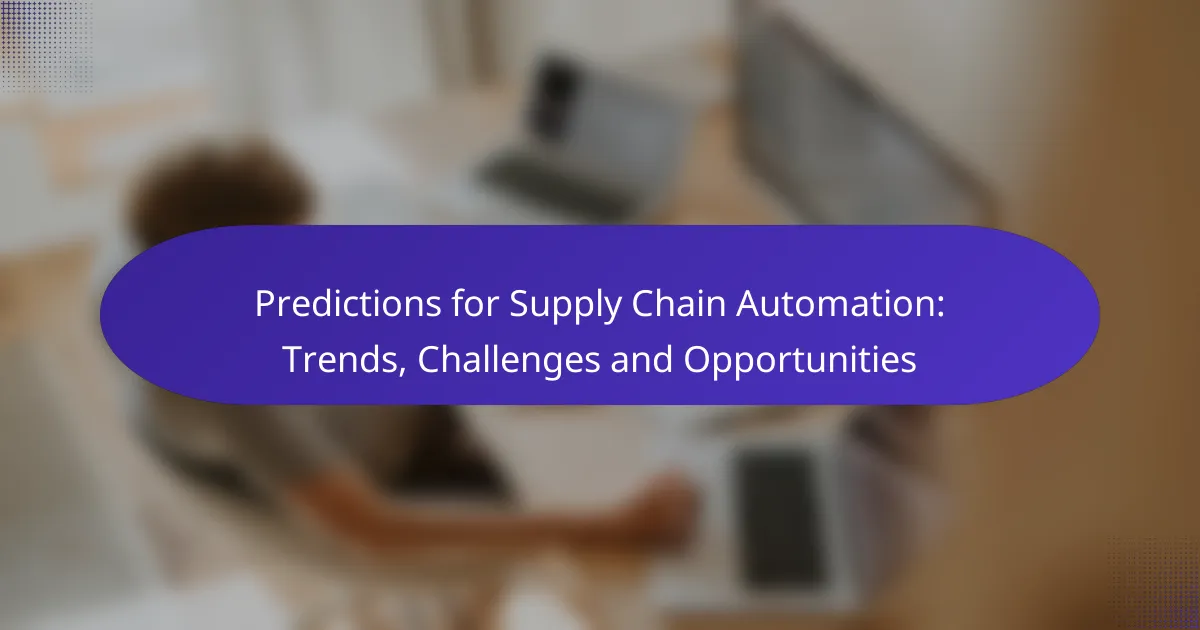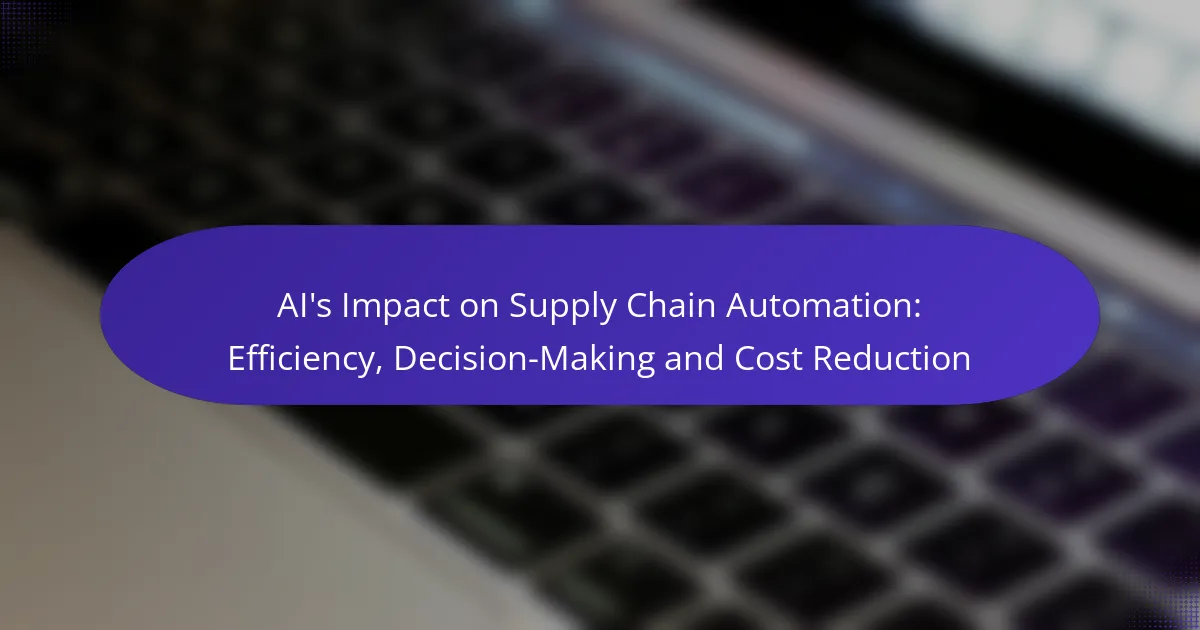Emerging technologies such as AI, IoT, and blockchain are transforming supply chain automation by enhancing efficiency, transparency, and responsiveness. AI leverages advanced algorithms to predict demand and optimize logistics, while IoT facilitates real-time data communication, improving decision-making. Meanwhile, blockchain ensures secure and transparent transactions, fostering trust among supply chain participants.
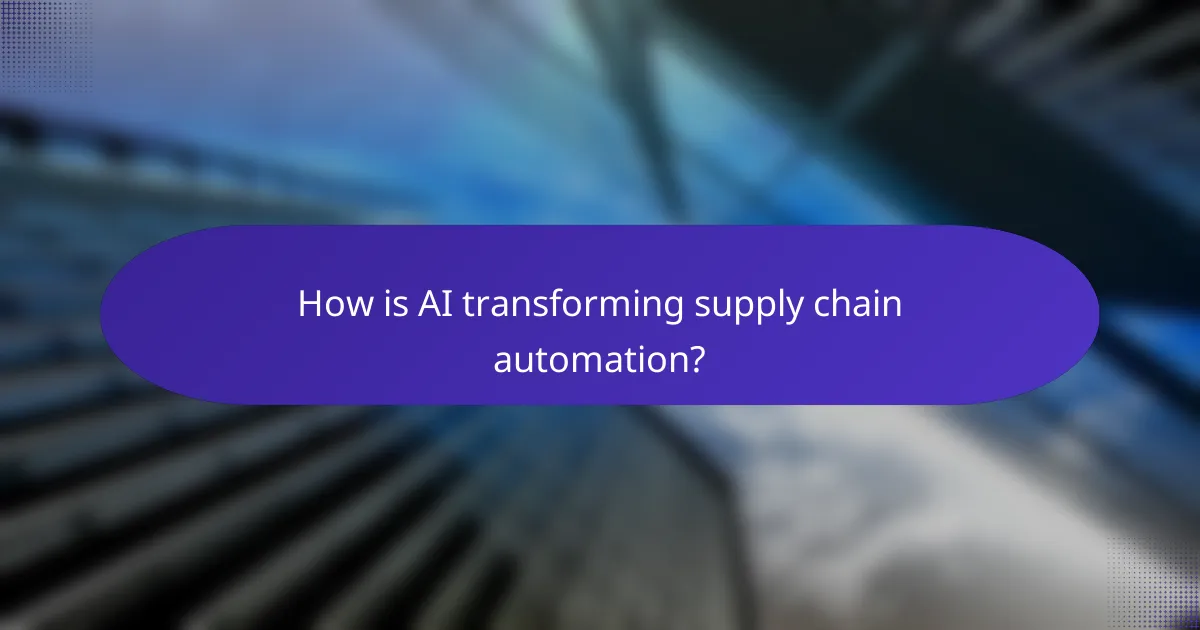
How is AI transforming supply chain automation?
AI is revolutionizing supply chain automation by enhancing efficiency, accuracy, and responsiveness. Through advanced algorithms and machine learning, AI enables businesses to predict demand, manage inventory, and optimize logistics processes effectively.
Predictive analytics for demand forecasting
Predictive analytics uses historical data and AI algorithms to forecast future demand trends. By analyzing patterns in sales data, seasonal variations, and market conditions, companies can anticipate customer needs more accurately.
For example, retailers can adjust their inventory levels ahead of peak shopping seasons, reducing excess stock and minimizing stockouts. Utilizing predictive analytics can improve forecast accuracy by up to 20-30%, leading to better inventory management.
Automated inventory management systems
Automated inventory management systems leverage AI to track stock levels in real-time and manage replenishment processes. These systems can automatically reorder products when they reach predefined thresholds, ensuring optimal stock levels.
Companies can implement solutions that integrate with existing ERP systems, providing seamless updates on inventory status. This reduces manual errors and saves time, allowing staff to focus on more strategic tasks.
AI-driven logistics optimization
AI-driven logistics optimization enhances route planning and delivery scheduling by analyzing various factors such as traffic patterns, weather conditions, and delivery windows. This results in more efficient transportation and reduced operational costs.
For instance, AI can suggest the best routes for delivery trucks, minimizing fuel consumption and improving delivery times. Businesses can achieve cost savings of 10-15% in logistics by adopting these AI solutions, leading to a more responsive supply chain.
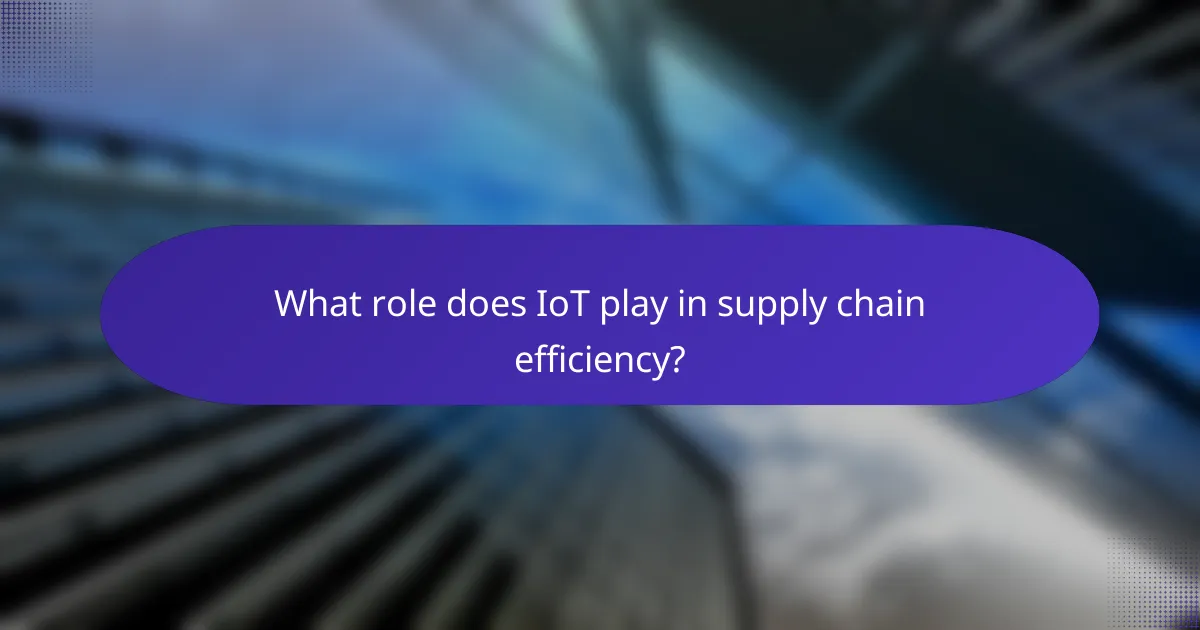
What role does IoT play in supply chain efficiency?
The Internet of Things (IoT) significantly enhances supply chain efficiency by enabling real-time data collection and communication between devices. This connectivity allows for improved decision-making and operational responsiveness, ultimately leading to cost savings and better customer satisfaction.
Real-time tracking of shipments
IoT facilitates real-time tracking of shipments through GPS and RFID technologies. These tools provide accurate location data, allowing companies to monitor the status of their goods as they move through the supply chain.
By utilizing IoT-enabled devices, businesses can reduce delays and proactively address issues, such as rerouting shipments in case of disruptions. This capability can lead to improved delivery times and enhanced customer trust.
Smart sensors for inventory monitoring
Smart sensors play a crucial role in inventory monitoring by providing continuous updates on stock levels and conditions. These sensors can detect temperature, humidity, and other environmental factors that may affect product quality.
Implementing smart sensors helps businesses maintain optimal inventory levels, reducing the risk of overstocking or stockouts. Companies can automate reordering processes based on real-time data, leading to more efficient inventory management.
Enhanced visibility through connected devices
Connected devices enhance visibility across the supply chain by integrating data from various sources into a cohesive system. This integration allows stakeholders to access critical information about product movement and condition at any time.
With enhanced visibility, companies can make informed decisions quickly, respond to market changes, and improve collaboration with suppliers and partners. This transparency is essential for optimizing operations and maintaining competitive advantage.

How is blockchain enhancing supply chain transparency?
Blockchain technology enhances supply chain transparency by providing a secure, decentralized ledger that records every transaction in an immutable format. This transparency allows all parties involved in the supply chain to access real-time data, improving trust and accountability.
Immutable record-keeping for transactions
Blockchain’s immutable record-keeping ensures that once a transaction is recorded, it cannot be altered or deleted. This feature prevents fraud and errors, as every participant can verify the authenticity of the data. For instance, if a shipment is logged on the blockchain, all stakeholders can trust that the information is accurate and unchangeable.
Additionally, this transparency helps in audits and compliance, as companies can easily trace back through the transaction history without the risk of tampering. This is particularly beneficial in industries like pharmaceuticals, where regulatory compliance is critical.
Smart contracts for automated agreements
Smart contracts are self-executing contracts with the terms directly written into code on the blockchain. They automate processes by executing agreements once predefined conditions are met, reducing the need for intermediaries and speeding up transactions. For example, a smart contract could automatically release payment to a supplier once goods are delivered and verified.
This automation not only cuts down on administrative costs but also minimizes the potential for disputes, as all parties have access to the same information and conditions. Businesses can implement smart contracts to streamline operations and enhance efficiency in their supply chains.
Traceability of products from source to consumer
Blockchain enables comprehensive traceability of products throughout the supply chain, allowing consumers to track the journey of goods from their origin to the final point of sale. This capability is particularly valuable in sectors like food and beverage, where customers increasingly demand transparency regarding sourcing and safety.
By scanning a QR code or using a mobile app, consumers can access detailed information about a product’s history, including its production, handling, and transportation. This level of transparency not only builds consumer trust but also helps companies quickly address issues such as recalls or quality concerns.
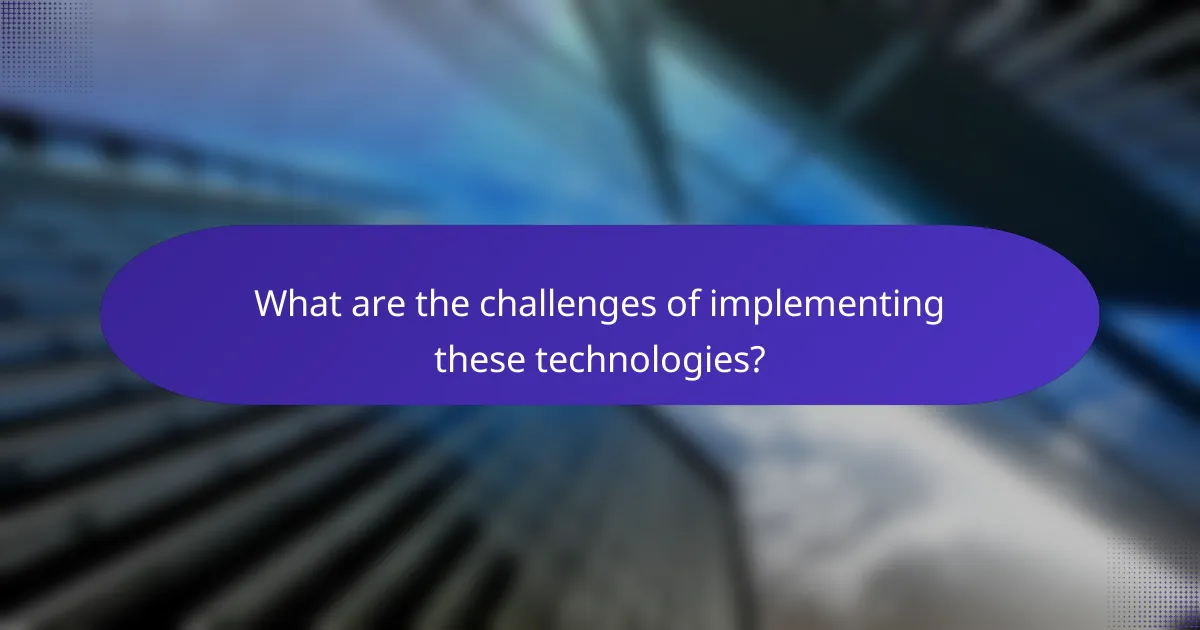
What are the challenges of implementing these technologies?
Implementing emerging technologies like AI, IoT, and blockchain in supply chain automation presents several challenges. Key obstacles include integration with existing systems, data security and privacy concerns, and high initial investment costs.
Integration with existing systems
Integrating new technologies with legacy systems can be complex and time-consuming. Many organizations rely on outdated software and hardware that may not support modern applications, leading to compatibility issues.
To facilitate integration, companies should conduct a thorough assessment of their current systems and identify potential gaps. Utilizing middleware solutions can help bridge the divide between old and new technologies, ensuring smoother transitions.
Data security and privacy concerns
Data security and privacy are critical when implementing AI, IoT, and blockchain in supply chains. These technologies often require extensive data sharing, which can expose sensitive information to cyber threats.
Organizations must adopt robust security measures, such as encryption and access controls, to protect data integrity. Additionally, compliance with regulations like GDPR in Europe or CCPA in California is essential to safeguard consumer privacy and avoid legal repercussions.
High initial investment costs
The initial investment for adopting advanced technologies can be significant, often requiring substantial financial resources. Costs may include software licenses, hardware upgrades, and training for staff to effectively use new systems.
To manage these expenses, businesses can explore phased implementation strategies, allowing for gradual investment over time. Additionally, seeking government grants or partnerships with technology providers can help offset some of the costs associated with adopting these innovations.

What are the criteria for selecting supply chain automation technologies?
When selecting supply chain automation technologies, consider factors such as scalability, compatibility with existing infrastructure, and the level of vendor support. These criteria ensure that the chosen solutions can grow with your business, integrate smoothly with current systems, and provide reliable assistance when needed.
Scalability of solutions
Scalability refers to a technology’s ability to handle increased loads or expand its capabilities without compromising performance. When evaluating solutions, look for options that can adapt to your business growth, whether that means managing more transactions, integrating additional features, or accommodating a larger workforce.
For example, cloud-based platforms often offer flexible pricing models that allow you to pay for only what you use, making them ideal for businesses expecting rapid growth. Aim for solutions that can easily scale up or down based on demand, ensuring you don’t over-invest in resources during slower periods.
Compatibility with current infrastructure
Compatibility involves how well new technologies integrate with your existing systems and processes. Assess whether the automation solutions can work seamlessly with your current software, hardware, and workflows to avoid costly disruptions during implementation.
Consider conducting a compatibility audit to identify potential integration challenges. Solutions that support widely used standards and protocols, such as APIs, can facilitate smoother connections with your existing infrastructure, reducing the risk of operational hiccups.
Vendor support and service options
Vendor support is crucial for ensuring that your automation technologies function effectively over time. Evaluate the level of customer service offered, including response times, availability of technical support, and the resources provided for troubleshooting and training.
Look for vendors that offer comprehensive service packages, including regular updates, maintenance, and training sessions. A strong support network can significantly reduce downtime and enhance the overall effectiveness of your supply chain automation efforts, allowing you to focus on core business activities.
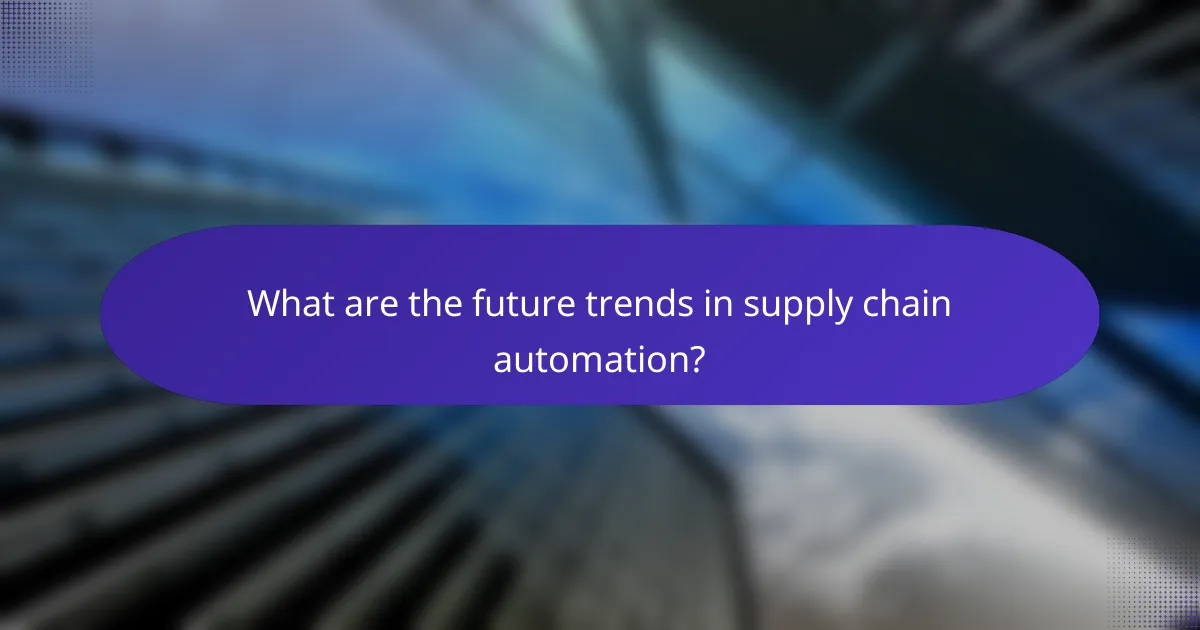
What are the future trends in supply chain automation?
Future trends in supply chain automation are heavily influenced by advancements in AI, IoT, and blockchain technologies. These innovations are set to enhance efficiency, transparency, and responsiveness in supply chains across various industries.
AI in Supply Chain Automation
AI is transforming supply chain automation by enabling predictive analytics, demand forecasting, and process optimization. By analyzing vast amounts of data, AI algorithms can identify patterns and trends that help businesses make informed decisions, reducing waste and improving service levels.
For instance, AI-driven tools can optimize inventory levels by predicting demand fluctuations, allowing companies to maintain just-in-time inventory systems. This minimizes holding costs while ensuring product availability.
IoT in Supply Chain Automation
The Internet of Things (IoT) enhances supply chain automation by connecting devices and sensors to collect real-time data. This connectivity allows for better tracking of goods, monitoring of equipment, and improved visibility across the supply chain.
Companies can implement IoT solutions to monitor temperature-sensitive products during transit, ensuring compliance with safety standards. This real-time monitoring can lead to quicker responses to potential issues, reducing losses and improving customer satisfaction.
Blockchain in Supply Chain Automation
Blockchain technology offers a decentralized and secure method for recording transactions, enhancing transparency and traceability in supply chains. By providing an immutable ledger, blockchain can help verify the authenticity of products and streamline processes.
For example, using blockchain, companies can trace the origin of raw materials, ensuring ethical sourcing and compliance with regulations. This transparency builds consumer trust and can differentiate brands in competitive markets.
